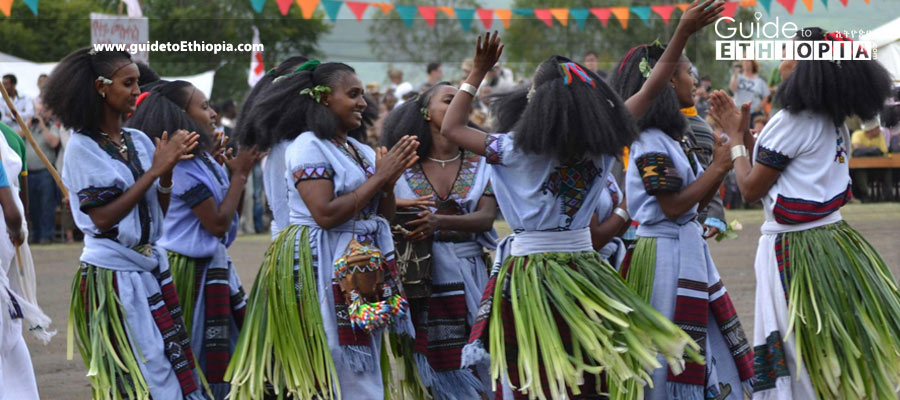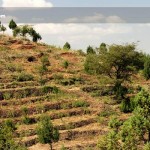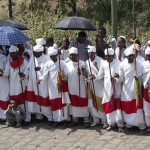Ashenda: A not to be missed Northern Ethiopia Colorful Festival
Starting from Wednesday August 22nd 2018 – 24th in Mekelle
Ashenda (Tigrinya: ኣሸንዳ, Agaw language: ሻደይ) is a festival celebrated in August (G.C.) in the Tigray andAmhara regions of EthiopiaAshenda marks the end of a two-week-long fast known as Filseta (Ge’ez: ጾመ-ፍልሰታ) when adherents of the Ethiopian Orthodox Tewahedo Churchgather to honour the Virgin Mary.
Ashenda means the “tall green grass”, estimated at around 80–90 cm minimum height that girls wear around their waists during the holiday. In the tradition of this religious festival, blades of grass are strewn on the floors of homes and shops as a kind of welcome mat.
This cultural festivity was originated from two historical legends that occurred in different periods. These were;
- The sacrification of Jehphttah’s daughter by her own father as cited in the Book of Jedges, the Old Testament
- The ascension of Virgin Mary (mother of Jesus); see Dormition of the Mother of God
The festival of Ashenda has cultural, religious and economic importance, and encourages industriousness. Once traditionally a girls’ festival, it has since gained widespread recognition and popularity in the northern part of the country and among communities of the Ethiopian diaspora.
Ashenda: The day when Tigray women show the true colors of their beauty
The air in the northern Tigray capital Mekele City at this time is filled with Ashenda songs. Everybody has been waiting for this. According to the culture in this part of Ethiopia, the young girls show case their beauty during these celebrations.
The whole Mekele exudes beauty. The songs range from appreciating Ashenda, Christian songs, love songs, appreciation of beauty etc. All have a characteristic beat, with the drum the most treasured instrument in this. This song is the most common: Yawey siye yegoualy diye “I am singing because I am a girl; See I am beautiful let me decorates myself. It’s my day”
Numerous groups some big and others small – ranging from five to fifty (5- 50) girls go singing and dancing. For girls this is the best time to be noticed. The crops will be ready for harvest in 4 months’ time, and if she is noticed now, who knows, she may walk down the aisle in January with a suitor that noticed her this season. Fathers invest in their daughter’s by buying them special clothes, taking them to the salon and sponsoring their makeup. If a girl has not been able to buy new dresses or other decorative makeups, it is cultural to use her mother’s best dress or borrow from neighbor even if it was over size.











































